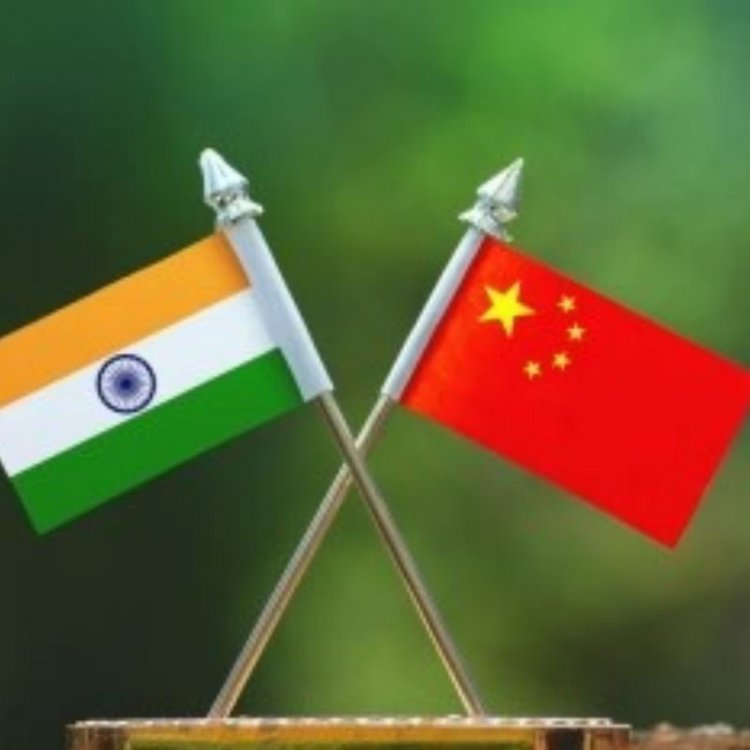India - China: Addressing the Chinese Challenge
STORIES, ANALYSES, EXPERT VIEWS

The gap between India and China is substantial and will continue to widen in the foreseeable future. Therefore, Gen Deepak Kapoor retd. (former Chief of Army Staff) states “there is a need to analyse the reasons for this divergence and explore effective strategies for addressing the challenges posed by China.”
China’s aggressive designs
China “tends to see India as a regional rival that is an obstacle to its expansionism and has stood firm against it. Flouting agreements signed in 1993, 1996, 2005 and 2013, China has continued salami-slicing tactics in Ladakh as well as Arunachal Pradesh. Along the LAC, China’s policy has been: ‘My claims are sacred and irrefutable, while yours are negotiable.’
“Even recent agreements on areas north of Pangong Tso, Hot Springs, Galwan, etc., reflect this reality. Despite 19 rounds of commander-level talks, there has been no resolution to the issue of illegal Chinese occupation of approximately 1,100 sq km in the Depsang Bulge area. Additionally, Indian patrols are denied access to the Charding Nilung Nullah area, which New Delhi claims as its own. Such altering of the status quo reeks of blatant expansionism.”
At the same time, the former army chief writes “China has ignored Indian objections to the China-Pakistan Economic Corridor, which passes through J&K. Furthermore, China has collaborated with Pakistan to orchestrate anti-India actions on the international stage. It has also regularly tried to win over India’s close neighbours. China has substantially expanded its presence in the Indian Ocean region, thus posing potential threats through both maritime and land routes.”
Countering China’s multidimensional challenge
To counter this multidimensional challenge, the former army chief suggests “the need of the hour is to adopt a whole-of-nation approach. While it is essential to strengthen the military to protect the nation’s territorial integrity, all other sectors must work together cohesively to provide coordinated support.”
Although much is being done to improve the infrastructure in border areas, “a lot of ground remains to be covered. In several forward areas in Central and Eastern sectors, troops are logistically dependent on a single road axis, which, if blocked by the adversary, would jeopardise the defence of forward areas.
“Experience has shown that the Chinese are quick to exploit perceived weaknesses but respect a firm and resolute stance. The Indian stand during the face-off at the Doklam plateau in 2017, the clashes in the Galwan valley in 2020 and subsequently at Yangtse in the Tawang sector are apt examples.
“After making inroads into east Ladakh in the beginning of May 2020, only the Indian move of a pre-emptive capture of Kailash Range brought China to the negotiating table, thus ensuring withdrawal from north of Pangong Tso, Hot Springs and Galwan. Similar opportunities need to be identified all along the LAC.”
There is also need for enhancing the “defence budget from the current 1.5 per cent of the GDP to at least 2.5 per cent, to begin with….Friends who can come to our aid in the event of an adverse situation need to be cultivated. A far-sighted foreign policy which caters to such an eventuality is a must. Quad and similar such partnerships can be an effective check against a recalcitrant and aggressive adversary.”
The border issue must be resolved
But even more importantly, the two outstanding border issue need to be resolved. The larger one, writes Mohan Guruswamy (a policy analyst studying economic and security issues, held senior positions in government and industry; also specialises in the Chinese economy) “is about the large tracts of territory in Ladakh and Arunachal Pradesh. These two territorial disputes are not going to be resolved even in the foreseeable long term……”
The earlier arrangements and agreements kept peace for many years until the Chinese threw them out of the window and the PLA “dug in positions in the Galwan Valley, Hot Springs, Ghogra and the area between Fingers 4 and 8 on the north bank of Pangong Tso in the summer of 2020. In Galwan Valley, the PLA’s new position was now less than 2 km from the modernised 230-km road from Darbuk to DBO road.”
Now, writes Guruswamy “we have a situation where the Indian Army and PLA commanders have been in talks from June 16, 2020 seeking a disengagement….The question here is: who withdraws and to where? This requires the determination of a single LAC. This is beyond the ken of the military commanders of both sides. Military men, even if instructed to find a compromise, are usually loathe to withdraw to tactically disadvantageous positions……”
Russia as mediator: Contrary to the government view, Guruswamy suggests “mediation between the two militaries, and that is best done by a third country’s military. A neutral military mediator can understand the tactical security concerns of either side and can help in determining the best position under the circumstances….” Guruswamy suggests Russia can be this third party because it “has been engaged with the militaries of both nations for decades and knows both sides well. It also enjoys a measure of trust in both countries…….”
















